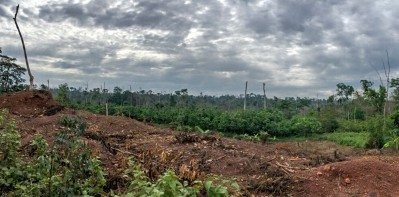Mint sustainability: Mars Wrigley boosts supply of 'critical ingredient'

Mars Wrigley this year began five-year sustainability project ‘AdvanceMint', known as ‘Shubh Mint’ in India, aiming to boost yields and income for mint farmers in Uttar Pradesh.
‘A long future’
Kim Frankovich, VP Sustainability at Mars Wrigley Confectionery, told ConfectioneryNews: "Mint is a critical ingredient in 65% of our gum & mint products across 16 of our brands such as Orbit, Extra, Airwaves and Doublemint.
"For Wrigley, it's the largest raw material, ingredient for us. We wanted to make sure it had a long future."
The mint crop
Mint grows in three main regions: US, Canada and India, over roughly 1m acres by 1m farmers.
"There's different types of mint grown in each origin," said Frankovich.
"In the US and Canada it's primarily peppermint and spearmint. The mint plant grown in India, largely in Uttar Pradesh, is a varietal called Corn Mint Menthol [also called Menthe arvensis].”
"If you look at the menthol content in peppermint and spearmint it's not enough, so in terms of origins India is a critical origin,” she said.
In the mentha oil market, around 80% of volumes come from India with US and Canada making up the other 20%.
Mint farmers mint crops obtain mentha oil from their crops and typically sell to ingredient suppliers, which in turn sell to companies like Mars Wrigley, toothpaste makers and the pharmaceutical industry.
A tale of two origins
Peppermint farming in the US and Canada is mechanized on 200-300 acre plots averaging 39 kg per acre.
Global mint production
Agribusiness Systems International (ASI) estimates that 750,000 farmers in India produce 80% of the world’s supply of mint – a crop that supports a $700 million industry worldwide. According to the Multi Commodity Exchange of India Limited (MCX), the 2014 global production of mint oils was around 48,000 metric tonnes (MT), though it has declined over the last three years. In India, the 2014 production of mentha oil was about 38,000 MT in 2014.
However, Corn Mint Menthol - a much higher yielding plant for mentha oil- is cultivated mainly by smallholders in India with less than one acre, averaging 37 kg per acre.
“This illustrates the opportunity for productivity improvements in India – a core focus of our Shubh Mint initiative,” said Frankovich.
‘Liquid Gold’
Indian mint farmers typically live below the poverty line on less than $1.25 a day, according to a Mars Wrigley baseline income study with a small sample size.
"These are largely subsistence farmers," said Frankovich.
"They grow mint in three months out of the year. They start planting in February/ March and then harvest in June before the Monsoons. It’s a critical crop for the farmers because it provides cash -It's called 'liquid gold' here,” she said.
Indian mint farmers typically grow rice, wheat, mustard and potatoes for their food needs.
Mars Wrigley claims its sustainability project has risen yields and income for Indian smallholder by focusing on three areas: plants (access to root stock), farming (good agricultural practice training) and community (education and training).
Mars Wrigley set up its program around its suppliers’ collection points. It cannot source directly due to regulatory restrictions.
Root of the problem
Access to rootstock is core to the program. Indian mint farmers reuse the rootstock of plants because they grow the crop for only 90 days a year.
"We found the rootstock in India is largely old - it could be 8-10 years old - and that was causing declining yields," said Frankovich. "Ten years is quite long and it would be susceptible to disease."
By comparison, rootstock in the US stays in the ground for no longer than five years.
Mars Wrigley secured rootstock from government agency the Central Institute of Medicinal and Aromatic Plants. The confectioner supplied the rootstock to farmers for free and taught them how to keep nurseries to renew rootstock when required.
Training to reduce input costs
Mars also partnered with nonprofit Agribusiness Systems International (ASI) to this year train 2,645 farmers in 68 villages how to prepare rootstock, land and how to irrigate.

"In terms of good agricultural practice, there is some extension work going on here in Uttar Pradesh but it's quite a vast area - it's about the size of the UK. So there’s a high need for training for mint farmers,” said Frankovich.
"Irrigation is a large input cost for the farmer. So we focus on when to irrigate and how much, also how to conserve water,” she continued.
Mars Wrigley also supported increased education opportunities in mint growing communities, for example by enhancing access to libraries and internet connections.
Impact numbers
The AdvanceMint program has increased average yields for the farmers by 68% to 62 kg per hectare and reduced input costs via lower water use and more efficient fertilizer application.
Income for farmers rose more than 23% as a result.
"Next year we will expand to an additional 5,000 farmers," said Frankovich.
Mars Wrigley will also continue to coach farmers already part of the program and will track how they are adopting training practices.
The company plans to reach 20,000 farmers in Uttar Pradesh by 2021, which will cover its entire supply chain needs.




















